lies like truth: July 2010 Archives
His intelligently-written piece covers such ground as the difficulties that PR people face trying to weed out the legitimate arts writers from the opportunists in the blogging world and the impact of the increasingly non-remunerated nature of the critic's job on the Edinburgh Festival.
Mr. Shenton's piece is available here. Food for thought.
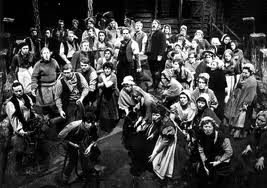 It's true that opera choruses can sometimes be godawful - a ramshackle group of amateurs in ill-fitting costumes marauding around the stage attempting to upstage the principles and regularly missing cues.
It's true that opera choruses can sometimes be godawful - a ramshackle group of amateurs in ill-fitting costumes marauding around the stage attempting to upstage the principles and regularly missing cues.But in many cases, they really are the unsung heroes of opera productions and should get greater recognition. Here's why:
1. They spend their lives sitting around back stage waiting -- sometimes for hours -- to go on for a few minutes.
2. They work very hard for relatively little pay.
3. They don't get any of the glory.
4. Their presence on stage and singing is frequently the thing that makes a climax a climax and/or conveys the sorrow or joy of a scene because their role is often to reflect what we're feeling as audience members.
5. They have to make music out of passages that often aren't very remarkable. Great opera composers are known for their brilliant aria writing and orchestrations. They're not generally revered for the way they write for large groups of singers.
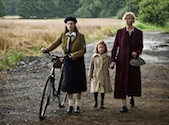 I was at the Jewish Film Festival's opening night over the weekend. The event prompted me to think about a few ways to make the event a night to remember versus one that is instantly forgettable. Here are my thoughts:
I was at the Jewish Film Festival's opening night over the weekend. The event prompted me to think about a few ways to make the event a night to remember versus one that is instantly forgettable. Here are my thoughts:1. Start with a film that possesses a strong storyline and characters. It should ensnare the mind and the heart in equal part. Or if it can only do one of these things, the heart should come first. Sounds obvious, I know. But a heady film or something too experimental won't jibe with the opening night crowd, which most likely has a large quotient of party people, staff from various embassies and corporate sponsors. The JFF hit exactly the right note with Ludi Boeken's Saviors in the Night, a gripping but thankfully not cliche-ridden Holocaust story set in Germany (screenshot from movie pictured above).
2. Keep opening remarks short, or better still, obliterate them completely. The JFF's speeches went on for way too long on Saturday evening -- around half an hour at least, it seemed. No one around me seemed to be listening. The festival's organizer's should take note.
3. If you're going to have a panel discussion after the opening night movie (and I question whether this is a good idea, especially if the audience has also had to sit through verbose opening speeches) make sure you have the A-Team of panel members. The JFF pulled out all the stops with a diverse group including the 90-something year old woman on whose life story Saviors in the Night is based.
4. Throw a really good after-party. The JFF again struck gold with a bash at the Swedish American Hall which featured really tasty Jewish cuisine-ish inspired food (I loved the egg salad on rye, the whitefish ceviche and the bread pudding) and peppy gypsy-ish music by the local old-school jazz outfit Gaucho. People danced and ate and drank and talked well into the night. The atmosphere was surprisingly hip for a film festival and there was a great buzz in the building.
 It's not surprising to hear that major recording labels like Decca think they can make a lot of money from the chant music of cloistered nuns, as the CBA story about the Benedictine nuns of the Abbaye de Notre Dame de l'Annonciation near Avignon, France, reports.
It's not surprising to hear that major recording labels like Decca think they can make a lot of money from the chant music of cloistered nuns, as the CBA story about the Benedictine nuns of the Abbaye de Notre Dame de l'Annonciation near Avignon, France, reports.But listening to chant, as relaxing as it might be for the listener, doesn't hold a candle to actually singing the chants in terms of the way in which the music affects the singer's body and mind.
I experienced this first hand yesterday evening while attending a "sound sadhana" session given by the Bay Area yogi and singer Ann Dyer. The one and a half hour session revolved around a mixture of intoning different vowels to see where they vibrate around the body, studying the rhythms, phonetics and melody of Sanskrit chant (an invocation to the Goddess Saraswati), doing call and response ragas and practicing a three-note drone.
The music might not sound anything like the chants of Benedictine nuns, but I think that the effects are fairly similar in terms of the way in which the vibrations affect different parts of the body and how the breath and mind cannot help to slow down through a very meditative approach to making sound. Although I didn't approach the chanting from a religious standpoint, those that carry a spiritual attachment to the practice of singing these Asian chants probably achieve the same devotional connection as the chanting nuns do as they invoke their God.
I was amazed over the course of the session at how my breath slowed and mind cleared. By the end, I felt like I'd had a deep-tissue massage. I very much enjoyed the detail with which we explored the Sanskrit pronunciation and worked at perfecting the loping rhythms of the text. Every time one person in the group got it wrong, Ann made us go back to the start again and clap out the rhythm till we got it right. In the end, we did. I particularly appreciated the rigorousness of the practice and the challenging linguistic component because it engaged me in ways that most yoga practices don't. In a yoga class, you have to concentrate hard, but in general you're trying to get out of the way of your brain. With the sound sadhana, at least while we were learning rhythms and pronunciations, we had to engage our brains deeply. Later on in the session, we were able to let go.
My only criticism of the class was the discussion at the end. When my body is rippling with all the lovely energy caused by the chanting and I'm feeling like lying back and relaxing, the last thing I want to do is have or listen to a protracted conversation about whether the Goddess Saraswati really is in the room with us or whether the term Goddess is just another way of saying "vibration" or "energy." I could have done without that, to be honest.
To my mind, the learning is in the doing. I don't think talking is all that helpful.
 The Wall Street Journal just ran a Q&A with Michael Tilson Thomas, music director of the San Francisco Symphony. Quite a lot of blather in the article, but the one thing that stood out for me was Thomas' remark about using skype:
The Wall Street Journal just ran a Q&A with Michael Tilson Thomas, music director of the San Francisco Symphony. Quite a lot of blather in the article, but the one thing that stood out for me was Thomas' remark about using skype:WSJ: Are you incorporating technology in your work here?
Mr. Thomas: I use Internet technology a lot. I regularly rehearse with people on Skype. Usually it's the first time they've ever done it, but I have my computer right over my piano keyboard, and we work out whatever we need to work out.
Skype has arguably changed the face of collaboration in all sorts of milieux both artistic and non-artistic.
I personally would be lost without the technology, as my AT&T iPhone service is failing me more and more as each week passes. (I blame all those new greedy iPad users and the cellphone company's gross network inadequacies.)
Some other ways in which artists I know are using Skype:
1. For co-writing songs, where the lyricist and musician are living remotely.
2. For handling edits to a manuscript between a writer and editor.
3. For discussing a painting or sculpture commission with a buyer.
4. For negotiating contracts.
5. For exchanging ideas with a playwright who can't be present in the rehearsal room.
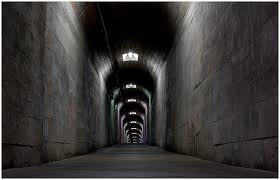 Since the media industry is what optimists call "going through a period of transition" and pessimists call "in the shitter," arts journalists have increasingly found themselves losing their jobs, and, whether on staff or freelance, working harder for less money. Nothing about this is new and it seems unlikely as far as I can tell, that things will change much for the next five to ten years.
Since the media industry is what optimists call "going through a period of transition" and pessimists call "in the shitter," arts journalists have increasingly found themselves losing their jobs, and, whether on staff or freelance, working harder for less money. Nothing about this is new and it seems unlikely as far as I can tell, that things will change much for the next five to ten years.But what I've come to realize lately is that under these circumstances, arts journalists are starting to look more and more like artists in terms of the piecemeal way that they are scratching out their existences in order to practice their craft. Like the actor who waits tables for a living or the folk singer who temps in a law office to make ends meet, these days, journos are having to hold down all manner of part- and full-time jobs that have nothing to do with the media in order to continue doing what until a few years ago would have been regarded as a profession. Now, arts journalism is for many a vocational sideline.
With the non-profit model becoming increasingly common among news organizations, the arts-journalist-as-artist concept is similarly taking shape. But the tricky part of this is that while there are lots of mechanisms in place to support the work of artists through residencies and grant-making programs, society hasn't caught up yet with the notion that the people who cover the arts also need this kind of support these days to practice their craft. There are a few isolated financial opportunities for arts journalists out there such as the very enlightened Warhol Foundation funding for members of the visual arts media. (If you cover music, dance or other artforms, the Warhol Foundation can't help you, though.)
But in general, arts journalists are slipping through the funding cracks: Arts funders typically don't fund arts journalism; they want to support artists exclusively. And media-oriented foundations and fellowship programs seem to be far more interested in supporting areas like investigative, education, science and political journalism as well as media entities that serve underprivileged communities than getting behind arts journalists.
It is the nature of the world that some professions are no longer useful to society and therefore become extinct. For example, pianists used to make a good living as employees of cinemas, playing for silent films, but this job barely exists today. It's going to take a lot of educating to make people see that quality journalism - and quality arts journalism in particular - still have value in today's world. But there's no guarantee that this will happen. If the funding mechanisms necessary for supporting the profession don't develop soonish, it won't be long before arts coverage is solely practiced by moonlighting waiters and nighttime corporate security guards. But unlike their colleagues in the novel writing, standup comedy and singer-songwriter worlds, it's unlikely, at least in the present situation, that these hobbyist arts junkies will have even the small light of grants, fellowships, residencies and other forms of patronage to sustain them through the dark hours.
 Someone from an art museum in San Francisco contacted me about doing a story about the fact that the museum has two campuses. Perhaps I'm missing something but multi-campus arts organizations don't seem like a particularly unique thing. I can think of several such institutions in the Bay Area right off the top of my head -- The Fine Arts Museums (the de Young museum and the Legion of Honor), Intersection for the Arts (which now has a new wing in downtown San Francisco in addition to its home-base in the Mission ) and The Marsh (which has a campus in The Mission and in downtown Berkeley).
Someone from an art museum in San Francisco contacted me about doing a story about the fact that the museum has two campuses. Perhaps I'm missing something but multi-campus arts organizations don't seem like a particularly unique thing. I can think of several such institutions in the Bay Area right off the top of my head -- The Fine Arts Museums (the de Young museum and the Legion of Honor), Intersection for the Arts (which now has a new wing in downtown San Francisco in addition to its home-base in the Mission ) and The Marsh (which has a campus in The Mission and in downtown Berkeley).Further afield, to name just two examples, there's MOCA in Los Angeles which has three locations (MOCA Grand Avenue, the Geffen and the Pacific Design Center) and the Met in New York which has its main uptown Manhattan location and The Cloisters further north.
In short, I'm not sure where the story is in all of this. Or am I missing something?
 Saturday was a big day of film music for me. I spent the daytime hours preparing for and moderating a panel for the Silent Film Festival all about the composition and performance of silent movie scores. And in the evening, I went to Davies Symphony Hall to hear the San Francisco Symphony under assistant conductor Donato Cabrera perform Bernard Herrmann's score for the 1960 Alfred Hitchcock Movie Psycho. The movie was screened at the same time above the orchestra's heads.
Saturday was a big day of film music for me. I spent the daytime hours preparing for and moderating a panel for the Silent Film Festival all about the composition and performance of silent movie scores. And in the evening, I went to Davies Symphony Hall to hear the San Francisco Symphony under assistant conductor Donato Cabrera perform Bernard Herrmann's score for the 1960 Alfred Hitchcock Movie Psycho. The movie was screened at the same time above the orchestra's heads.Some brief observations, first about the Psycho performance and second about the silent film panel:
1. Hermann's music deserves the recognition that it gets. In fact it should get more. Hearing his score played live, with its combination of lovely lyrical passages and moments of taut needlepoint angst, gave me a fresh appreciation for the composer's writing. It's one of those film scores that could stand on its own in a concert hall, though it was fun to watch the film while hearing it.
2. The audience at the symphony hall (which was packed) was one of the most enthusiastic I've seen at the venue. I was tremendously excited to hear people clapping and cheering so passionately. I imagine that even a screening of the movie at a beautiful film house like the Castro Theatre wouldn't elicit as much of a response as the audience on Saturday night displayed for the live music performance. I would have liked people to have remained quiet until the orchestra finished playing at the end though - there was so much whooping for the final 30 seconds of the movie, that Herrmann's final bars were completely drowned out.
3. I'd be curious to know how many people who came to hear the orchestra on Saturday night also come to experience other kinds of symphonic performances at Davies. I am guessing that there isn't a great deal of crossover, but I may be wrong about that. The white, middle-aged couple sitting to my right looked like prime San Francisco Symphony goers. But they told me that they're just fans of Psycho and had been gifted tickets to the concert by their daughter; otherwise, they said, they don't get to Davies very often.
4. This final point is really the subject of an entirely different blog post or even an article: Is the San Francisco Symphony a happy orchestra? The players generally look like they're dialing it in. It doesn't matter if they're playing the music of John Adams, Bernard Herrmann or Gustav Mahler; they often have sour expressions on their faces. I wonder what's going on?
5. I couldn't really tell if the audience at the Castro Theatre for the lunchtime "Variations on a Theme" panel discussion about silent film music enjoyed themselves as I squinted beyond the spotlight into the darkness from my very exposed perch on the stage. People came up to me afterwards and said they got something out of the experience. I personally thought the best part of the show was at the end, when the musicians stood at the front of the stage and the audience was able to ask them questions.
6. The format for the rest of the hour and 20 minutes wasn't ideal in my opinion. With seven musicians all giving 7-10 minute presentations, there wasn't a whole lot of time for discussion or interaction. I was up on stage and the musicians, who should have been the stars of the show, were (besides the final 10 minutes) stuck in a cluster below in the dark by the piano and Wurlitzer organ. This made it both hard for me to see them to ask questions and the audience to see who was talking when they responded.
7. If the festival does a panel like this again - and I really think that it should as the subject is a fascinating one - fewer musicians should be invited to contribute. It would also help if the subject were more focused. For example, I would love to moderate a discussion on the difference between silent film scores that pay close attention to following historical precepts (as in the use of traditional improvisation techniques and source material from library archives of the period) and those that approach the art form from a contemporary standpoint (as in the use of textures, instruments and ideas that wouldn't necessarily have been heard in the silent film era).
8. I hope I get asked to do this sort of thing again. I felt like I stuck out like a sore thumb. But it was such a treat to get to meet and chat with so many experts in the field. In short, I had lots of fun.
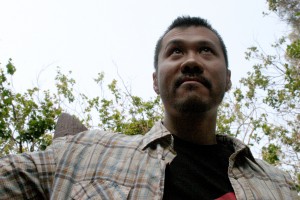 I have a great deal of admiration for Alan So (pictured), the energetic artistic director / programmer behind the eclectic San Francisco Soundwave festival. Over the course of two months in the summer, So brings together remarkable sound and visual artists in intriguing settings and integrates their work with thoughtful themes.
I have a great deal of admiration for Alan So (pictured), the energetic artistic director / programmer behind the eclectic San Francisco Soundwave festival. Over the course of two months in the summer, So brings together remarkable sound and visual artists in intriguing settings and integrates their work with thoughtful themes.A concert I attended at The Lab in San Francisco's Mission district on Friday night, for instance, epitomizes So's approach to creating meaningful audience experiences. Friday night's program brought together three contrasting musical acts as a way of exploring the theme of water, a sub-theme under this year's overall festival theme of the environment.
The bluegrass/Americana trio Crooked Jades played sea chanteys and old baptism hymns. Then cellist experimentalTheresa Wong combined playing techniques with vocalizing to tell the story of a grain of sand battered by tides and currents. Finally, the new music ensemble Red Shift and composer Mason Bates collaborated on one of Bates' compositions for strings, keyboard, clarinet and electronics. The piece, arranged in several movements, captured the journey of the Colorado river.
With the addition of a forest-like visual art installation complete with sound-activated video, the space came alive with the musical performances.
There were really only two downsides to the evening -- one was Wong's performance, which didn't work in part because of some technical issues which caused her video projections to fail. The other less-than-appealing aspect of the proceedings, something that I have remarked on in the past while watching So in action, is the artistic director's inability to introduce his performers compellingly.
This isn't as trivial as it sounds. So is talented at creating innovative programming and draws many wonderful artists to his festival including the likes of Bates, Red Shift and The Jades alongside previous attendees like Odessa Chen and Zoe Keating.
But when he gets on stage and talks about them, he rambles and falls to pieces. Every other word is a superlative -- he must have used "amazing" and "incredible" dozens of times in the course of his tedious entracte spiels on Friday evening.
Such an inspired producer should also learn to be an inspired speaker in order to get audiences excited about the performances he's worked so hard to plan. Otherwise, he risks turning us off. If he cuts out the superlatives and makes his speeches shorter and more focused, So will make his introductions worthy of the artists which he is introducing to audiences.
Alternatively, So could always delegate the responsibility of talking to the house to someone else in his team who might do the job better.
 Since SF Playhouse allowed a few audience members sitting in a specially-designated area of the theatre to send Twitter messages during last Tuesday evening's performance of The Fantasticks, an interesting debate about whether this activity should be allowed in the theatre or not has been going on on the Berkeley Repertory Theatre's Facebook page.
Since SF Playhouse allowed a few audience members sitting in a specially-designated area of the theatre to send Twitter messages during last Tuesday evening's performance of The Fantasticks, an interesting debate about whether this activity should be allowed in the theatre or not has been going on on the Berkeley Repertory Theatre's Facebook page.It seems that opinions are wildly divided on the subject. The detractors say that people should have their attention on the stage at all times and tweeting can wait till the intermission or after the show. The people who think tweeting should be allowed point out that it has the potential to engage and bring in new audiences. Bill English, SF Playhouse's artistic director, said in the message thread on the Berkeley Rep Facebook page that the activity is no different from critics scribbling in notebooks all the way through shows, which I think is a very valid point.
I suppose I'm on the fence about the question. On the one hand, I find lit phone screens to be a distraction in a darkened theatre (the same goes for critics who use pen lights while writing in the dark.) And I do think that if a play is truly engaging, sending out tweets should be the last thing on an enraptured audience member's mind. On the other hand, I don't think it does any great harm, especially if the tweeters sit at the back of the theatre where their screens and tapping are likely to distract the minimum number of theatre-goers. And if it helps to engage people in new ways, then why not?
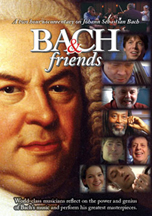 I love those spiraling evenings where you hop from one amazing arts event to another. Last night was epic. A brief summary:
I love those spiraling evenings where you hop from one amazing arts event to another. Last night was epic. A brief summary:1. Bach & Friends: San Francisco Classical Voice hosted the west coast premiere of a new documentary about the great Baroque composer produced and directed by Michael Lawrence at the Sundance Kabuki cinema. The often compelling film features interviews with such leading lights from various musical genres as Joshua Bell, Hilary Hahn, Bela Fleck, Bobby McFerrin, Chris Theil and the Emerson Quartet. The film is dotted with lively scenes and beautiful performances. Among my favorites are an hilarious spiel by Peter Schickele about his fictitious musical creation, P D Q Bach, a scene in which an improviser has his neurological patterns monitored by improvising Bach-like keyboard music in a brain scanner and a section in which a 12-year-old pianist talks about the experience of playing Bach in an elderly people's home. But the film is about half an hour too long and the cinematography, which revolves around endless close-ups, gets predictable after a while and looks ugly. (Do we really need to have our attention forced on the pores in Simone Dinnerstein's skin and Joshua Bell's double chin for 10 minutes? It distracts us from the music.) Another heresy is that the documentary includes exhaustive performances of Bach's works for keyboard, string quartet and solo strings, but doesn't even mention any of his choral music. No St Matthew Passion. Not a single cantata. This is a massive oversight. Nevertheless, Bach & Friends provides a touching, refreshing and generally engaging view on the impact of the great composer on our lives today.
2. Silent Film Festival pre-opening reception: Turned up for the tail-end of a reception for this weekend's Silent Film Festival (at which I will be moderating a panel on silent film composition and performance this Saturday.) The highlight was watching the composer Matti Bye and three members of his ensemble squish together on the bench of a Steinway Grand and improvise an eerie silent film-like score.
3. Bardot A Go Go at The Rickshaw Stop: Spent the rest of the night shaking some tush at the Rickshaw's Bastille Day homage to 1960s French pop. The Rickshaw is one of my favorite clubs in town because of the diversity and inventiveness of its programming which ranges from bhangra dance classes to a cappella choral concerts. The crowd was dressed appropriately in svelt little mini-dresses and Jean Paul Belmondo skinny tie cool. The music and video projections were suitably gamine -- lots of film footage of France Galle bopping about in her symmetrical blonde bob. My only criticism of the event was the infiltration of tracks with English lyrics on the playlist. On Bastille Day, only French language tracks should be allowed. Vive la France.
 This morning, I was interviewed by a couple of marketing consultants as part of a project aimed at helping them pull together a branding and messaging strategy for a local performing arts organization.
This morning, I was interviewed by a couple of marketing consultants as part of a project aimed at helping them pull together a branding and messaging strategy for a local performing arts organization.The interview, which lasted about 40 minutes, brought up a couple of interesting areas of inquiry, namely:
1. How important is it for a performing arts organization to have a strong identity? On the face of it, you'd think this absolutely key -- especially in terms of branding. That in all my years of experiencing arts events under the auspices of this arts organization I couldn't really describe what kind of work the organization does or articulate anything of its mission is somewhat troubling I suppose. On the other hand, maybe there are cases where having a diffuse identity works. It's one of the organization's strengths that it can swing between mounting full-scale productions with affiliated companies, hosting arts salons and visual art exhibitions and incubating new works for the stage. But still, a lack of clear identity does make it hard to think of the company in a strong way.
2. What is innovation in theatre? In the Bay Area, we tend to think of ourselves as great innovators. It's the Silicon Valley mentality. But throwing a screen up on stage with some artsy video or including an electronic soundtrack created by the performers as they move about the stage via specially-positioned electrodes is not innovative in and of itself. Innovative theatre is theatre that connects with the audience in a transformative way. Bottom line: it should make us understand something new about ourselves and the world we live in.
 I'm preparing to present a panel on composing and performing music for silent films for the San Francisco Silent Film Festival this Saturday. The program, which is called "Variations on a Theme" and starts at 12 noon at the Castro Theatre, features some of the world's leading silent film music people and ensembles including pianists Donald Sosin and Stephen Horne, organist Dennis James, the Mont Alto Motion Picture Orchestra, the Alloy Orchestra, and musician and composer Matti Bye.
I'm preparing to present a panel on composing and performing music for silent films for the San Francisco Silent Film Festival this Saturday. The program, which is called "Variations on a Theme" and starts at 12 noon at the Castro Theatre, features some of the world's leading silent film music people and ensembles including pianists Donald Sosin and Stephen Horne, organist Dennis James, the Mont Alto Motion Picture Orchestra, the Alloy Orchestra, and musician and composer Matti Bye.I've been having a fun time delving into the subject. Who knew that the music of famous operas greatly influenced the early film music repertoire or that many people who were drafted to play the piano to accompany silent movies back in the early 20th century could barely sightread and were in general pretty unremarkable amateur players?
Here are two books on the music of silent films which should be required reading for anybody interested in finding out more about this area of musicianship: Silent Film Sound by Rick Altman (Chapters 13-17 cover music specifically) and Musical Accompaniment of Moving Pictures: A Practical Manual for Pianists and Organists by Edith Lang and George West. The book is available free online here.
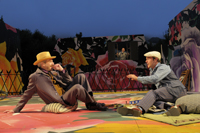 No summer in the Bay Area is complete without a trip to Orinda to experience a production and picnic at the California Shakespeare Theatre's Bruns auditorium. There's something so magical about watching the sun disappear behind the golden hills while watching what are usually high-quality productions of classic plays (and the occasional new take on an old standard.)
No summer in the Bay Area is complete without a trip to Orinda to experience a production and picnic at the California Shakespeare Theatre's Bruns auditorium. There's something so magical about watching the sun disappear behind the golden hills while watching what are usually high-quality productions of classic plays (and the occasional new take on an old standard.)It's true that sometimes the weather and productions fall short of ideal. I've yawned and/or shivered my way through several plays at Cal Shakes in the past. But the trip I made to see the company's production of George Bernard Shaw's Mrs Warren's Profession on Saturday night delivered the Cal Shakes experience at its best.
All that was regrettable was the loss of the ruggedness of the picnic grounds, which have lately been souped up to look all shiny. Although the gleaming new landscaping, toilets and snack pavilion give the Bruns space a more upscale look, they sort of undercut the rustic feeling of the space. Concrete and steel don't in this case add to the beauty of the natural surroundings in my opinion. If it weren't for the fact that the show I saw was so wonderful, I would have said that the money spent on "improving" the facilities could have been used more effectively on bettering the quality of the work on stage.
But I don't need to say such a thing because the production was so terrific that I didn't mind the souped-up surroundings. Under the directorship of Timothy Near, Cal Shakes' production of Mrs Warren comes to life with an energy and savage humor that surpasses any production I have seen to date of Shaw's masterpiece social satire which examines the theme of prostitution in its broadest possible sense.
For one thing, the play is eloquently cast. Anna Bullard's Vivie Warren and Stacy Ross' Mrs Warren bring out the pathos and claws of the play's central mother-daughter relationship. The two women show deep-seated affection for one another while at the same time standing up for themselves and doing whatever it takes to push forward their agendas. The men of the cast -- Rod Gnapp as the puckered Reverend Gardner, Dan Hiatt as the bumbling Mr Praed, Andy Murray as the oafish Sir George Crofts and Richard Thieriot as the sweet and dandyish curate's son Frank Garder -- create sharply drawn characters that all stand out individually, while blending in with the ensemble.
For another thing, the design elements of the production all work together to bring out the multi-layered texture of Shaw's dramaturgy. I was particularly taken with Erik Flatmo's vibrant scenery, which offsets enormous gaudy painted roses against aggressive black furniture. As the play unfolds, a low-garden fence made out of forbidding, black, interlocking spears gradually gets bigger and bigger and takes up more space on stage. By the end of the play, when the darkness of Vivie's background is fully revealed and understood forcing her to retreat into a state of workaholic isolation, the fence has become a huge locked fortress, completely encasing the stage and, metaphorically, Vivie's heart. Powerful stuff.
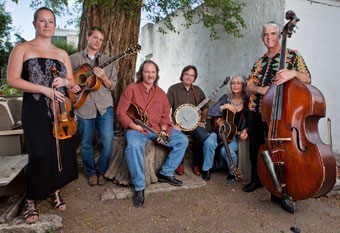 Experiencing the music of the progressive bluegrass outfit Hard Road is the equivalent of reading the poetry of Spike Milligan. Warm-hearted, yet with a mad professorly edge, the group tantalizes the eardrums with its homespun-streetwise blend of fast-strummed neo spirituals and folk songs.
Experiencing the music of the progressive bluegrass outfit Hard Road is the equivalent of reading the poetry of Spike Milligan. Warm-hearted, yet with a mad professorly edge, the group tantalizes the eardrums with its homespun-streetwise blend of fast-strummed neo spirituals and folk songs.Headed up by mandolin player and songwriter Steve Smith and the guitarist and singer-songwriter Chris Sanders, the ensemble was performing at the Freight & Salvage Coffee House in Berkeley last night.
The atmosphere in the auditorium (which I always find to be way too sterile for roots music) was friendly and relaxed. The crowd was enthusiastic, even though the place wasn't very full.
My only complaint: Smith and Sanders were joined on the stage by Bill Evans on the five-string banjo, bassist Bill Amatneek, and fiddler Megan Lynch. But while Evans' banjo-playing was featured quite prominently on the program, Lynch and Amatneek didn't get as much exposure. I would have liked to have heard more of these tremendously talented players.
In other news: I'm excited about the west coast premiere screening next Wednesday at the Kabuki Theatre of a new documentary film by Michael Lawrence all about the music of J. S. Bach. More information about the movie, which includes personal reflections on the great man's sound by the likes of Joshua Bell, Bobby McFerrin, Philip Glass, Béla Fleck, Chris Thile, Hilary Hahn, Zuill Bailey, Matt Haimovitz and Edgar Meyer, can be found here.
 A trip to Los Angeles on LA Times business and a friend visiting from London has kept me away from my blog for the last few days.
A trip to Los Angeles on LA Times business and a friend visiting from London has kept me away from my blog for the last few days.All I want to say for now is that I love the Hollywood Bowl.
I spent Monday afternoon watching Grant Gershon rehearse the LA Phil and the LA Master Chorale for a Tuesday evening concert of celebratory music which included Haydn's Te Deum, Vivaldi's Gloria, Poulenc's Gloria and the "Hallelujah Chorus" from Handel's Messiah (complete with fireworks!). Then I returned the following evening for the concert.
OK, so music nerds like to sniff and moan about the sub-optimal acoustics and the fact that audience members spend their time drinking wine and eating cake instead of paying one hundred percent of their attention to the artists on stage. But really there's no place like the Bowl on earth.
The trick to enjoying yourself at the Hollywood Bowl is to leave some of your musical pretensions at the door. Bring warm clothes, find a friend to cuddle up with and get together a picnic. Otherwise it's bound to be a long night.
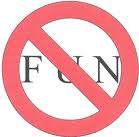 Since launching a non-profit arts project at the start of this year, I've been thinking about fundraisers quite a bit. I've attended a few for other organizations and I even mounted a modest one myself for my project last October in advance of the launch.
Since launching a non-profit arts project at the start of this year, I've been thinking about fundraisers quite a bit. I've attended a few for other organizations and I even mounted a modest one myself for my project last October in advance of the launch.I've come to the conclusion that fundraisers are a crazy amount of work and may not raise a ton of money. But they're worth doing anyway because of the connections and goodwill you can generate, the pleasure you can give people if the event is done right and the (perhaps modest) amount of cash you can procure to keep your project afloat.
Last night, however, I attended a fundraiser for an arts organization which made me see that there are times when it's just not worth bothering. The event was, in essence, the worst fundraiser I've ever been to in my life.
The organization in question is one I care about, so I went along, even though I received my invitation only the day before the event itself. When I got there, a woman at the front desk barked "We're asking for $20." The invitation had said "donations at the door" so I was a little taken aback to be hijacked for a specific amount of cash in such an aggressive way.
The venue where the event was held was soulless -- a boring black box theatre space which had not been decorated or changed in any way to make it appear more convivial. There was no free food or drink and the stuff that you could pay for -- a few untempting cans and some packets of candy -- was not inspiring at all.
Inside the theatre itself, a few people sat in the seats silently watching a singer-songwriter with long hair and a knitted beret sing endless, boring songs about his "darlin'" to the sound of a nurdling guitar. The music was accompanied by video footage of the performer and his friends messing about on a lake and in someone's apartment. At one point, the musician invited a girl up to the stage to sing a song with him. She was horrible.
What was really weird about the set-up was that the stage area was flanked by long tables at which the organizers of several other non-profit arts projects sat silently with fliers, posters and other materials relating to their projects on display. They looked uncomfortable sitting up there in full-view while the music was going on.
After sitting through the first musician's effort, the event's organizer and the director of the arts organization whose fundraiser it was made a couple of pointless speeches. Then another singer-songwriter got up to play his long set. His guitar was out of tune but no one seemed to care. He had, at least, a lively stage presence and some of his lyrics were funny. (His song about a lesbian cocaine party mad me chuckle slightly.)
To make matters worse, everyone was badly dressed. My friend and I didn't stay for the third and fourth items on the performance roster. We snuck out mid-song with sore bottoms from the uncomfortable seats.
I'll probably organize a fundraiser for VoiceBox in the fall. I learned a lot last night about how not to go about putting on my event. So at least there was one positive outcome from last night's debacle.
